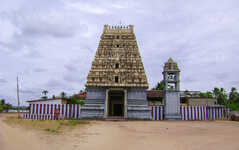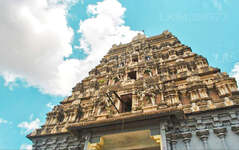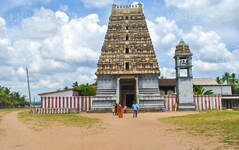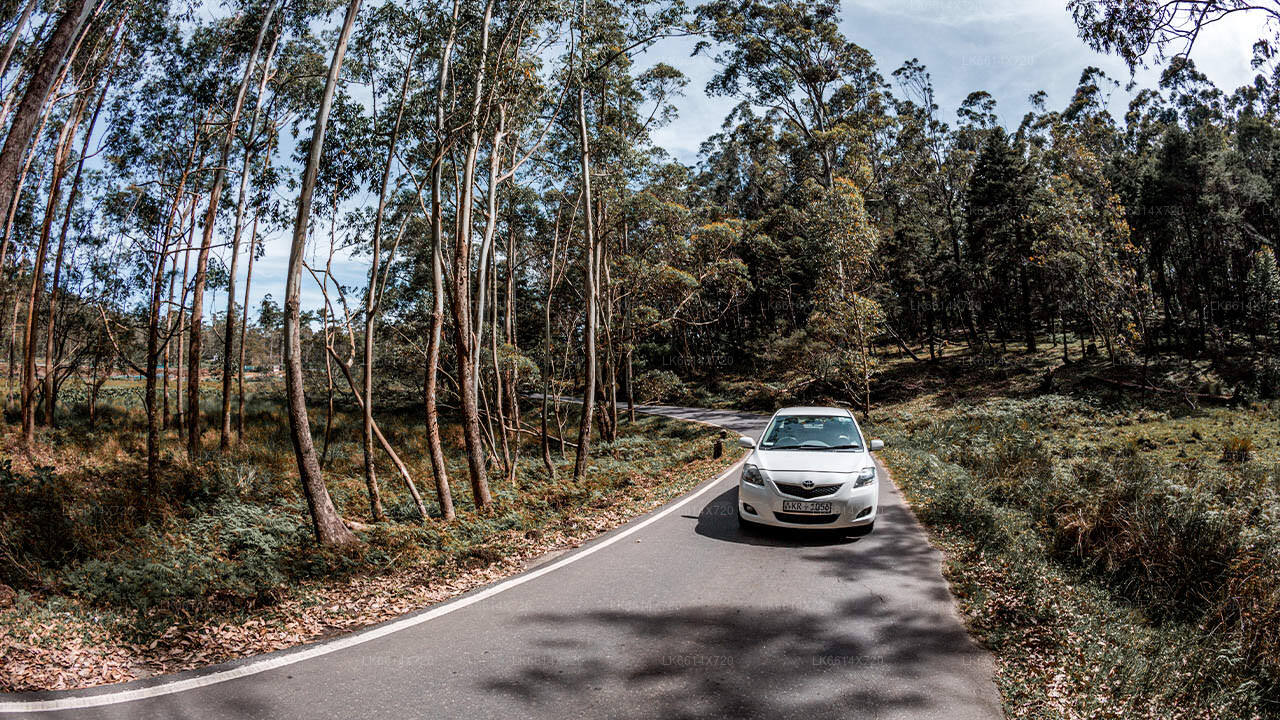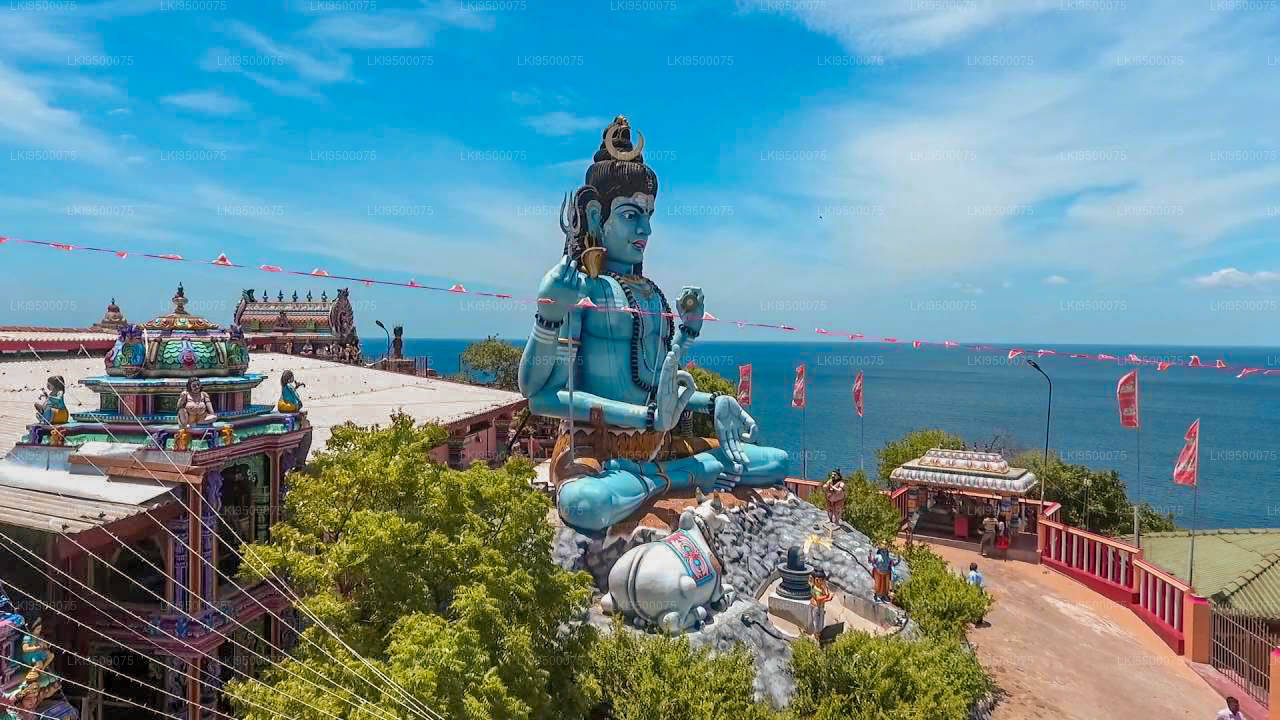
Trincomalee City
Trincomalee, located on the northeast coast of Sri Lanka, boasts a natural deep-water harbor and pristine beaches. Rich in history, it features landmarks like the ancient Koneswaram Temple. The city's diverse marine life and vibrant culture make it a captivating destination for tourists and historians alike.
Aathi Koneswaram Temple
Aathi Koneswaram Temple in Sri Lanka: A Place of Worship
Aathi Koneswaram Temple in Sri Lanka is a regionally important Hindu temple located in the Thambalagamuwa village in the Trincomalee District. The name of the temple in Tamil means the “Temple of the Original Lord of Konesvaram”. It is situated 24 kilometers from the town of Trincomalee. The temple was constructed during the 17th century in replacement to the Koneswaram temple (Temple of Thousand Pillars) that was destroyed by the Portuguese in 1622. Only the main Sanctorum remains of the original temple. The Gopuram or main entrance tower was added in 1953 and is one of the tallest in the region.
The temple is built of stone and is surrounded by two enclosed pathways. The presiding deity is Siva but there are important cults associated with the veneration of Pattini Amman and Kathirkaswami accommodated within the main premises as well. The temple also has minor shrines to Pulleyar, Navagraha, Murunkan, Valli and Tevayani. The daily services are held set according to scriptures along with an elaborate annual festival that involves Tamil and Sinhala devotees of Trincomalee district. There are also festivals that pertain to Pattini Amman and Kathirkaswami. As part of the Sri Lankan civil war, in the 1980s and 90’s the village was deserted and the temple abandoned. Since 2004 residents of the village have returned and the temple has been restored.
Aathi Koneswaram Temple in Sri Lanka: The History
Aathi Koneswaram Temple in Sri Lanka is situated in the village of Thambalagamuwa that was part of the medieval semi-independent feudal division called Thambalagamuwa Pattu. Prior to the arrival of Portuguese in 1622 and then Dutch colonial overloads in 1656, leaders of the Thambalagamuwa Pattu and others around it were independent rulers. Thambalagamuwa is surrounded by lush paddy fields and was a prosperous settlement. The presiding deity is known as Ati Konanayakar and the consort as Hamsagamanambike; another name for Mother Goddess Amman. These names are significant of the original presiding deity of the Ko esvaram temple, Konesar and Annam Mennatai. The idol of the presiding deity is dated to the later Chola period (1070-1279 CE) and the consort to that of early Chola period based on the composition of metals and styles. The temple’s name and the separate shrine to Ati Konanayakar allude to the tradition that this temple was built to accommodate the idols that were saved from the destruction of the Temple of Thousand Pillars in Trincomalee by the Portuguese colonial officers.
According to Tirukonasala Purana the temple was built with the help of Kandyan King Rajasingha II (1630-1689) after the loss of Koneswaram temple in the Trincomalee town. The idols that were saved from the destroyed temple were moved from place to place and eventually located in a secure territory under the Kandyan jurisdiction. According to the chronicle, Vara rasasinkam identified with Rajasingha II by historians says that the Kandyan kings also provided for the upkeep of the temple by allocating land to the temple in perpetuity and revenue distribution from local taxes. Another Tamil text of interest is Konesar Kalvettu. It is written from a point of view legitimizing the claims of the new temple that is Ati Konnanayakar to the traditions, revenue, and services rendered to the destroyed Koneswaram temple. The author of the text is Kavirasa Varotayan and was written after the new temple was established.
According to the Tirukonasala Purana, Rajasingha II directed the local feudal lords to maintain the temple and its administration. These traditions were maintained by the local Vanni chiefs of the Thambalagamuwa Pattu division during the consequent period. The prevalence of this tradition as a successor temple to the original temple destroyed by the Portuguese was recorded by the Dutch colonial governor of Trincomalee, Van Senden in 1786. He recorded the physical status of the idols that were from the original Koneswaram temple. Residents of Thambalagamuwa Pattu made requests to the Dutch colonials to follow the traditions of allocating a portion of the revenue generated from paddy cultivation of rice to the maintenance of the temple. A similar request was also made to the British colonial governor Alexander Johnston by the Vanni lords of the Thambalagamuwa Pattu, in 1815.
As a substitute temple to the original Koneswaram temple that was destroyed, tradition has endowed Ati Konanayakar with all privileges that were enjoyed by the previous temple. This includes the association of Hindus from various parts of Trincomalee district its festival organization to the assimilation of all local non-Saiva cults within the temple premises. During the Kandyan and later Dutch colonial period the Tamapalakamam temple also enjoyed revenue from the land that was given to it via royal gifts. During the British colonial period the temple came under the control of private ownership. The temple’s private trustees were removed and in 1945 it became the responsibility of locally elected board. The Gopuram or gate tower was added in 1953. and is one of the largest towers in the Tegion and is of five stories high.
About Trincomalee District
Trincomalee is a port city on the east coast of Sri Lanka. The Bay of Trincomalee's harbour is renowned for its large size and security; unlike every other in the Indian Sea, it is accessible to all types of craft in all weathers. The beaches are used for surfing, scuba diving, fishing and whale watching. The city also has the largest Dutch fort in Sri Lanka. It is home to major Sri Lankan naval bases and a Sri Lankan Air Force base.
Most of the Tamils and Sinhalese believe that this place is sacred to them and they are the indigenous people of the area. Trincomalee and its environs have both Hindu and Buddhist sites of historical importance. These sites are sacred to the Hindus and Buddhists.
About Eastern Province
The Eastern Province is one of the 9 provinces of Sri Lanka. The provinces have existed since the 19th century but they didn't have any legal status until 1987 when the 13th Amendment to the 1978 Constitution of Sri Lanka established provincial councils. Between 1988 and 2006 the province was temporarily merged with the Northern Province to form the North-East Province. The capital of the province is Trincomalee. The Eastern province's population was 1,460,939 in 2007. The province is the most diverse in Sri Lanka, both ethnically and religiously.
Eastern province has an area of 9,996 square kilometers (3,859.5 sq mi).The province is surrounded by the Northern Province to the north, the Bay of Bengal to the east, the Southern Province to the south, and the Uva, Central and North Central provinces to the west. The province's coast is dominated by lagoons, the largest being Batticaloa lagoon, Kokkilai lagoon, Upaar Lagoon and Ullackalie Lagoon.

